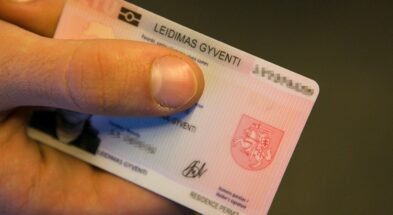The National Occupation Classification (NOC) is a system that Canada uses to assess the degree of ability and education required to secure a job or pursue a profession in the country.
NOC codes determine whether jobs are skilled, semi-skilled and unskilled, which is an important consideration for immigration. Candidates for immigration to Canada through one of the federal economic programmes are often required to have prior work experience in a skilled occupation.
Currently, NOC 2016 is used by Immigration, Refugees and Citizenship Canada (IRCC) to evaluate professional eligibility for its temporary and permanent immigration programs. In November 2022, NOC 2021 will take effect.
What do the NOC 2016 categories entail?
The present method determines talents on four levels:
NOC A: Jobs that typically demand a University degree.
NOC B: Skilled trades occupations or those requiring a college diploma
NOC C: Intermediate-level jobs or those that require job-specific training
NOC D: On-the-job training occupations in the labour force
What exactly is NOC 2021?
The most significant change in the NOC 2021 is the replacement of the present four-category “skill level” framework with a six-category approach. The new system establishes the minimum requirements for each occupation in terms of Training, Education, Experience and Responsibilities (TEER).
The Teer system is divided into three categories:
TEER 0: People who work in managerial positions.
TEER 1: Completion of a university degree plus many years of experience in a TEER category 2 occupation.
TEER 2: Immigrants who have completed a two-to-three-year post-secondary education programme at a community college, institute of technology, or CÉGEP; Completion of a two-to-five-year apprenticeship training programme; jobs with supervisory or major safety duties (police officers and firemen);
People having numerous years of experience in a specialised TEER category 3 vocation (when applicable).
TEER 3: Successful completion of a two-year post-secondary education programme in a community college, institute of technology, or CEGEP; Apprenticeship programme of fewer than two years; More than six months of on-the-job training, training courses, or particular work experience combined with a high school diploma; Several years of experience in a specialised TEER category 4 vocation.
TEER 4: This is the end of secondary school; Several weeks of on-the-job training combined with a high school diploma; Several years of experience in a specialised TEER category 5 (if relevant) employment is necessary.
TEER 5: No formal schooling qualifications and only a brief work demonstration.
What Are The Changes?
According to sources, the new method considers about 16 jobs to be eligible for Express Entry, whereas three formerly eligible occupations have been eliminated from any of the categories.
The list of the occupations added to NOC 2022 are;
Payroll administrators
Dental assistants and dental laboratory assistants
Nurse aides, orderlies and patient service associates
Pharmacy technical assistants and pharmacy assistants
Elementary and secondary school teacher assistants
Sheriffs and bailiffs
Correctional service officers
By-law enforcement and other regulatory officers
Estheticians, electrologists and related occupations
Residential and commercial installers and servicers
Pest controllers and fumigators
Other repairers and servicers
Transport truck drivers
Bus drivers, subway operators and other transit operators
Heavy equipment operators
Aircraft assemblers and aircraft assembly inspectors. Three jobs that became ineligible are:
Other performers
Program leaders and instructors in recreation, sport and fitness
Tailors, dressmakers, furriers and milliners. However, these professions will find eligibility if they are embedded in a larger professional course or related programmes.



















